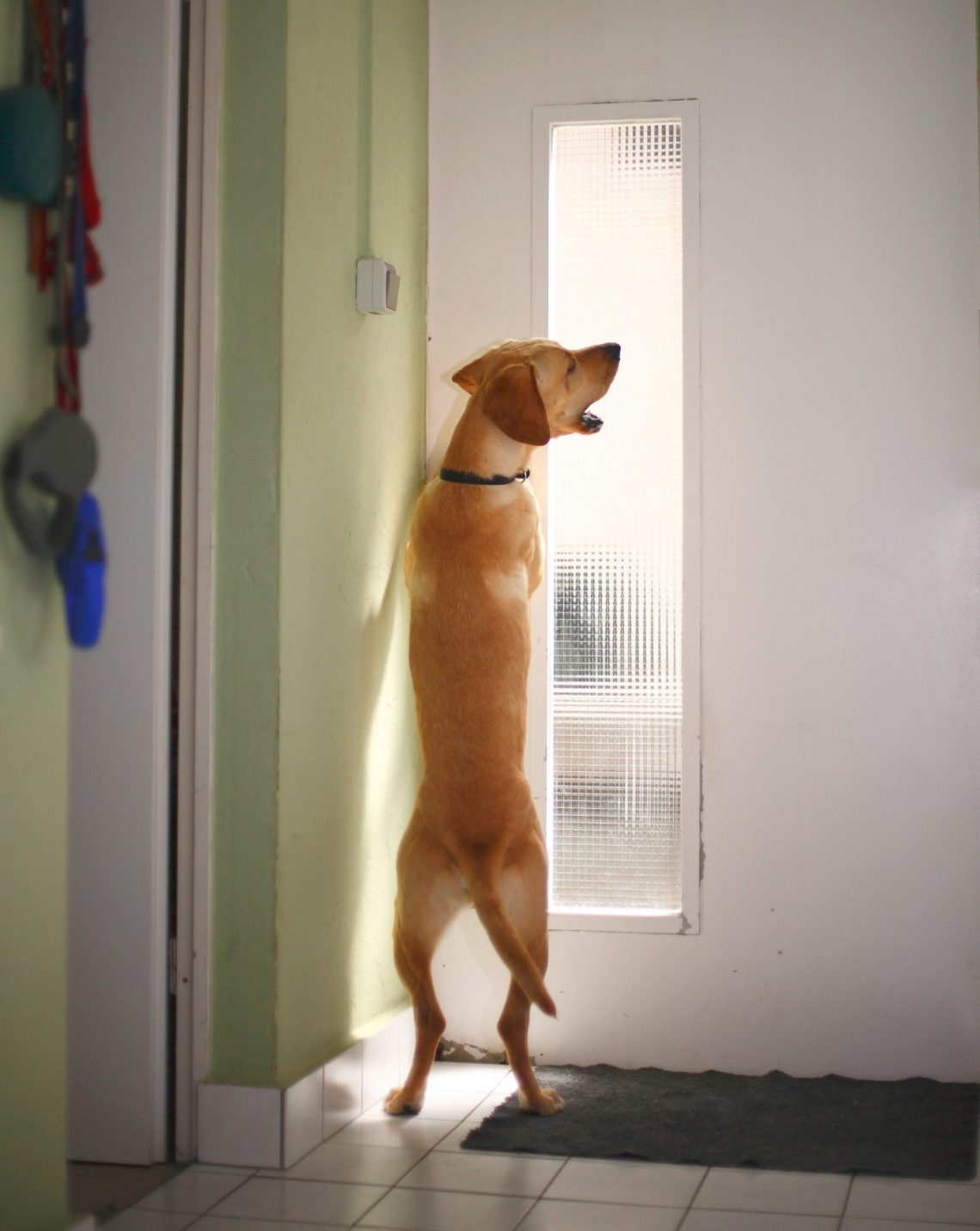
Bi o ṣe le da aja duro lati gbó ni ẹnu-ọna
For some dogs, the sound of a doorbell can cause uncontrollable barking, creating a commotion both in the house and outside the door. Let’s figure out why the call excites the dog so much and how such chaos can be prevented.
Awọn akoonu
Why do dogs bark at the doorbell?
Even people who are generally social beings tend to flinch at the unexpected knock on the door.
For a dog, this stress can be tenfold, so that even a gentle bell ringing can sound like a voice screaming “Someone in the house!”. Again, dogs aren’t exactly afraid of what’s behind the door – they’re just too excited. While everyone appreciates a dog’s enthusiasm, it’s rare that guests are happy to be jumped on or barked at as soon as the door is opened.
Until the next visitor is greeted loudly again, check out a few ways to wean a dog from barking.
Short Term Solution: Greet guests before they get to the door
There are times when you expect several guests at once. An easy way to provide them with a warm welcome is to meet them as far away from the dog as possible.
If you are expecting guests, try to meet them before they come to the door. On Halloween, you can wait for the kids on the porch, or leave the bucket outside to avoid the constant ringing at the door. For other guests (who were invited, for example, to dinner, a birthday, etc.), you can leave a sign from the series “No need to call, just come in!” at the door so as not to scare the dog with unnecessary doorbell calls.
As for your dog, keep it in a crate or other comfort zone in the house and try to turn on the TV or radio to block out the noise the guests make.
Long-Term Solution: Train Your Dog to Be Calm at the Door
Step 1: Get your dog used to the door
While at home, practice approaching the door with your dog. Without ringing the doorbell, repeat a normal phrase like “wait a minute” or “stay here” and give your dog a treat if he manages to remain calm. If you have ever tried to train a dog with a clicker, this is a great opportunity to apply this technique. Practice walking up to the door and touching the handle. Look at the dog, say the prepared phrase and order to sit down. When the dog completes the command, generously reward him with a healthy treat. Repeat as needed until the dog understands that if you are walking towards the door, something nice is waiting for him.
Step 2. Increase the distance between you and the door
Now you need to help the dog relax before you even get to the door. Try to say the same phrase from different parts of the house, then go to the door, touch the handle and order the dog to sit down, as described above.
Step 3. Open the door
By this time, the combination of verbal command and approach to the door should be fairly common for the dog. Repeat the previous steps, but start opening the door, giving the dog a treat for sitting down. Continue as needed until opening the door is just part of the trick.
Step 4. Doorbell
Have a family member or friend ring the doorbell while you start training right away: say a phrase, touch the handle, and then ask the dog to sit down. Give your dog a treat as you open the door, and then repeat until the whole process feels natural.
Remember that the most important thing is silence. Reward your dog only when he stops barking and does so consistently. Even the most complex processes will eventually begin to bring results.





